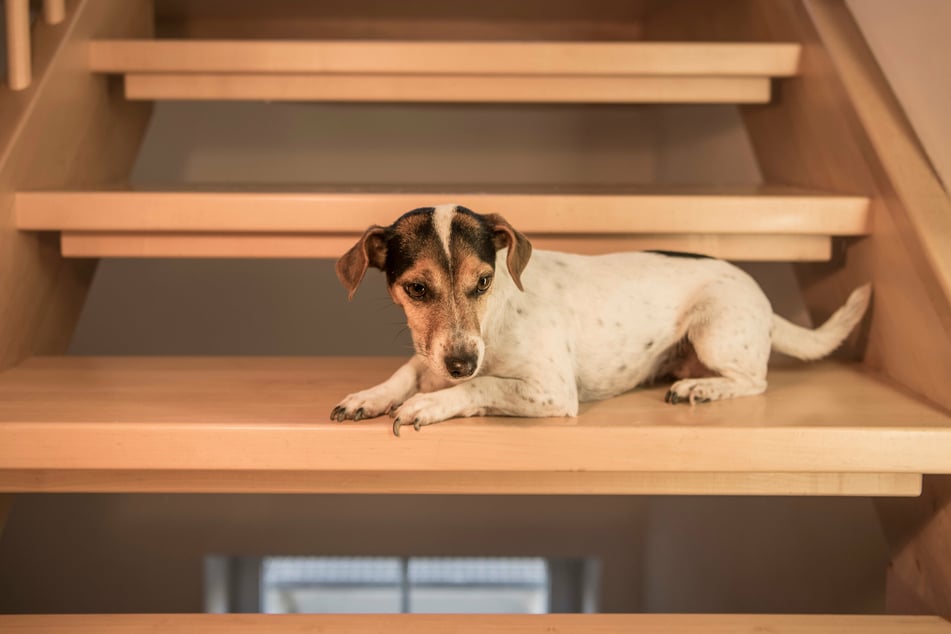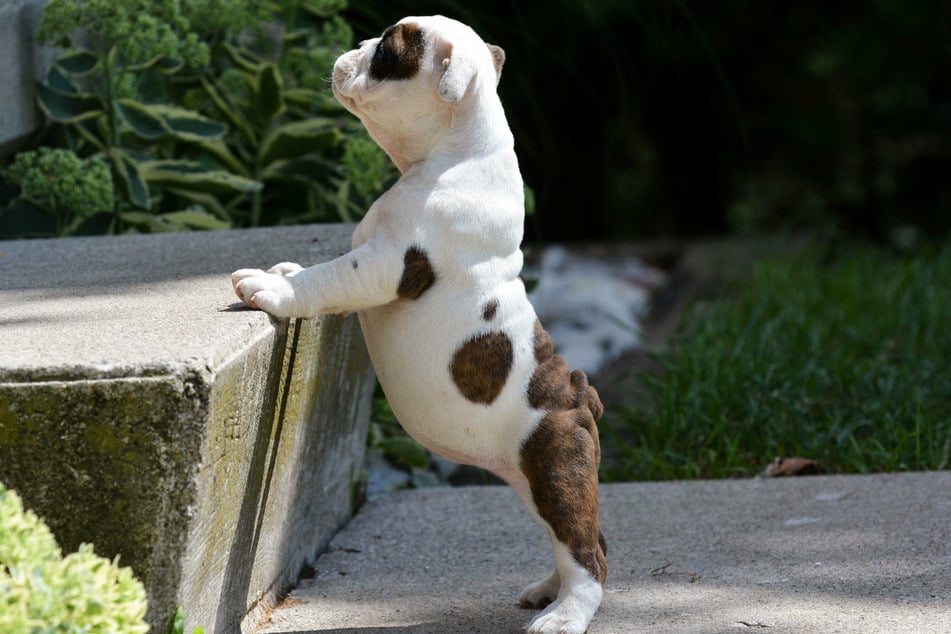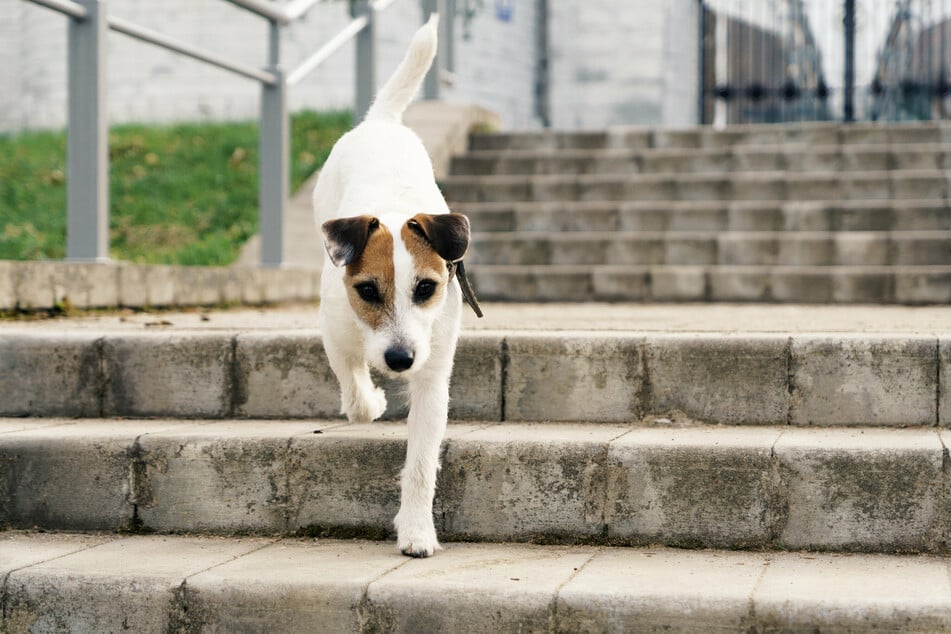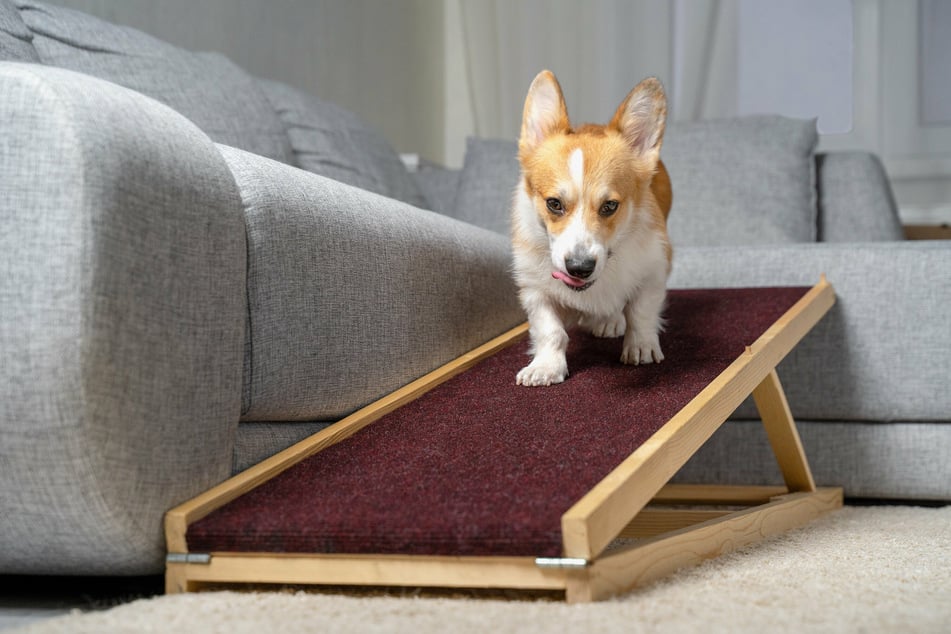Are stairs bad for dogs?
Should dogs and puppies be climbing stairs, or is it bad for their bodies and bones? Here are a few things to consider before you let your pets race up and down the steps.

Life is full of up and downs, and sometimes there is also the unavoidable set of stairs.
Stairs require dogs to move their bodies in what some say is an unnatural motion way, because of the shape and height of the steps.
Lots of dog owners even blame their pooch's hip pain on stair climbing. Some take the issue so seriously that they pick up their furry friends and carry them between floors.
And it's not just people who worry about this. Some dogs refuse to go up the stairs because they're afraid they won't be able to get down. Others picked up a dislike for steps when they were puppies.
So where does fact stop and fiction start? TAG24's dog guide can help you sort one from the other. Here's what dog owners should bear in mind when it comes to stairs.
Does climbing the stairs do your dog more harm than good?
Lots of pet owners associate stair stepping with a bunch of canine ailments, from hip and elbow dysplasia, to other orthopedic diseases. But stair climbing has not been proven to cause these conditions. On the contrary, there's plenty of evidence for a lack of connection.
Dogs develop hip problems when their hip joint are stressed and the layer of cartilage between the socket and the joint head gets worn down. The most common reason for this wear and tear is that the dog is carrying too much weight. In other words, Fido should lose some weight.
Quick changes in speed are also bad for your dog's joints. Sudden stops and changes in direction, like when playing fetch or barreling down the stairs full speed ahead, puts a lot of pressure on their bones.
Dogs tend to carry most of their body weight in their shoulders, which explains why running downstairs is more strenuous for dogs than humans. The best thing for your dog to do to protect their joints is to take the stairs slowly.
In fact, if your pup can master walking down the stairs in a slow and controlled manner, this activity can become a joint stabilizing activity.

Should puppies climb stairs?
People tend to think that climbing stairs has a negative effect on a young dog's physical development, specifically on their muscular development. But no studies back up this idea.
Puppies don't need any extra hard challenges, discovering the whole new world is tiring enough. It's best for the young animals to take things slow, one step at a time. This applies to walks, games, new behaviors, and stairs. Puppy owners should make sure walks or bike rides are of puppy friendly length and speed.
When it comes to stairs, you might be tempted to help your puppy up by carrying them up to the next floor. But that's not the best idea.
If dog owners constantly carry their young pups up and down, then they are teaching their dogs that stairs are something dangerous and stressful. The puppy, in turn, may develop a fear of the steps and refuse to climb them. This anxiety could follow them into adulthood.
Some dog breeds start cute and small, but grow into huge beasts. Dog owners should keep that fact in mind when they start teaching their puppy to avoid the stairs. One day, that puppy you can easily heft up a flight or two now will be a huge weight to carry. A dog, with an acute fear of climbing, can make every day life difficult for themselves and their owner. After all, not every building has an elevator.
That's where good dog training comes in. It's important that pet owners teach their dogs to master the stairs in both directions: up and down. Your pooch needs to have the confidence and know that they can master the stairs.
Climbing the stairs with your puppy has another advantage as well. It can train the muscles and ligaments in the animal's hip area. Appropriate training strengthens the area around the hip joint and can help prevent problems later.

When can puppies climb stairs?
So how old does a puppy need to be to go up and down the stairs safely?
Dog experts tend to say that puppies can usually start climbing stairs when they are between 12 and 16 weeks old. Dogs younger than three month old should stick to a limited amount of training, stair climbing, walking and playing.
But it is impossible to generalize at what age puppies can climb stairs. Every dog develops at its own pace, and some take longer than three months. Dog owners should go by their own pet's pace. And remember that the dog's breed and size is an important factor when it comes to stairs.
As is the staircase itself: a big staircase with high steps or a narrow spiral staircase, for example, won't be accessible for puppies or small dogs.
If you are training your puppy to deal with stairs, and you come across a particularly long staircase, you could carry it most of the way up the stairs and then let it climb the last few itself. Remember, it's important to let your dog do the climbing at its own pace.
Puppies and small dogs tend to have difficulties with big stairs. You can help our dog learn to climb this obstacles by building little training courses at home. Make them some small steps to scramble up and down, this will help them train those little muscles.
Not all dogs are going to get big. Some breeds with longer backs and shorter legs, such as Dachshunds, corgis, pugs and Bassets, can have a hard time with tall stairs. If you are unsure if your dog can in fact climb stairs higher than they are tall, the best thing to do is consult with your breeder or veterinarian.

Are stairs bad for old dogs?
Just like their human companions, dogs tend to get stiff joints as they age. Old bones can make ascending or descending flights of stairs quite a chore.
If an elderly animal starts avoiding the stairs, it might be time to make some adjustments to their living situation. Try to make sure they have everything they need on each floor of the house. That way they can keep stair climbing to a minimum.
If it gets to a point that they don't want to climb the stairs, then you really can pick up the old dog and give them a hand. Unlike puppies, spoiling them won't lead to any bad habits at that age.
How should dogs climb the stairs?
The best way for a dog to go up and down the steps is with controlled, extensive, and even motions. They are ideal when it comes to training the dog's dog's pelvic muscles, while also being similar to the movements dogs make when running for long distances on a flat surface or uphill.
Dog owners should train their dog to take the stairs step by step, slowly up and down. What they should really focus on is speed, as running can be a real bodily stressor.
If the steps are too high for your small dog, you should look for a way to decrease the height. Generally, with smaller creatures, pet owners need to take heights more seriously. Small dogs might have a hard time climbing up taller things and that includes the couch, bed, and other furniture. You might want to consider adding a dog sized ramp, or an extra step, next to the couch if you want to give your pooch a boost into your lap.
And if your dog's vet has recommended that they avoid the stairs, then that's what you need to make sure they do.

The bottom line with stairs is this: they can do a dog a lot of good. Stair climbing can help strengthen a dog's joints – but only if they are trained to go up slowly and with control.
Cover photo: 123RF/thaka1
